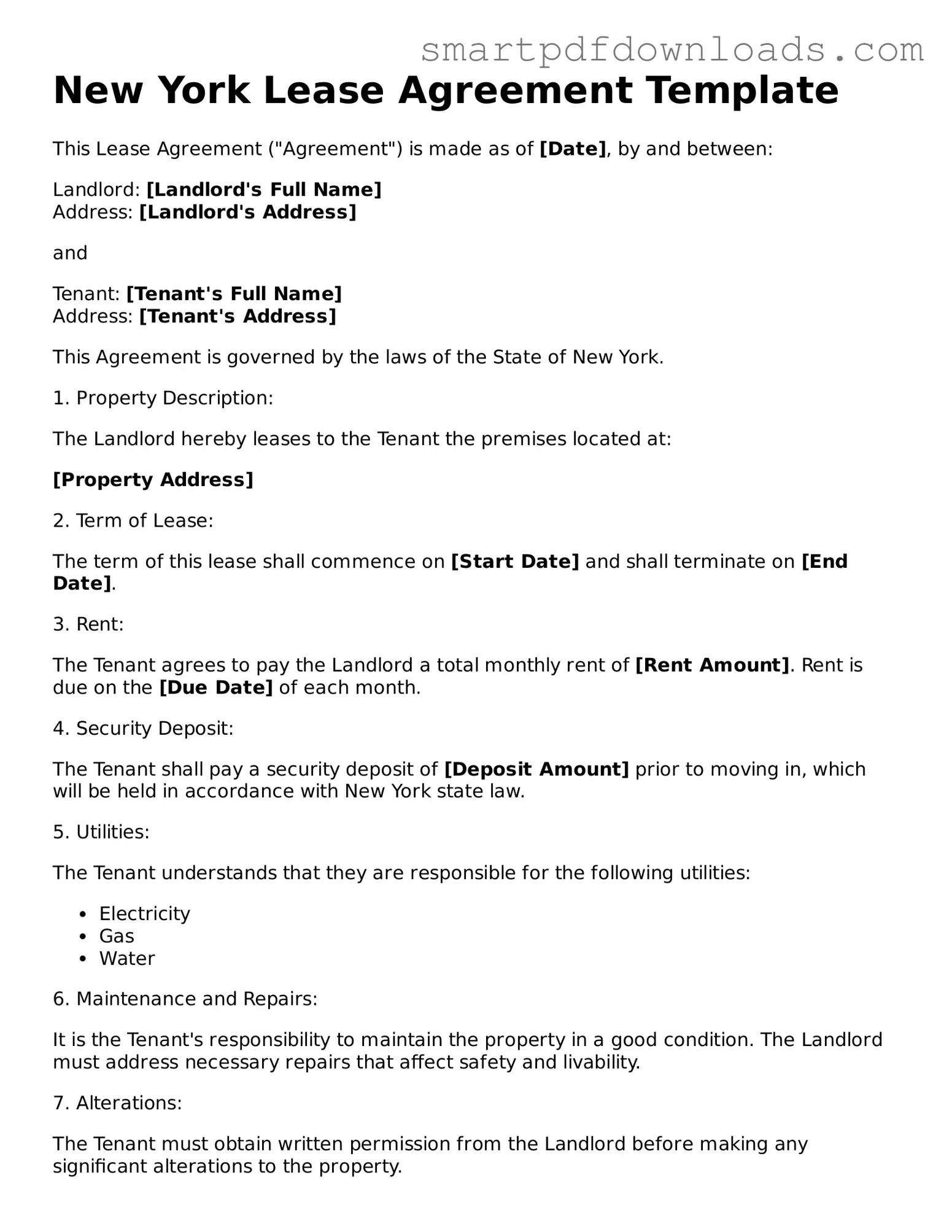New York Lease Agreement Template
This Lease Agreement ("Agreement") is made as of [Date], by and between:
Landlord: [Landlord's Full Name]
Address: [Landlord's Address]
and
Tenant: [Tenant's Full Name]
Address: [Tenant's Address]
This Agreement is governed by the laws of the State of New York.
1. Property Description:
The Landlord hereby leases to the Tenant the premises located at:
[Property Address]
2. Term of Lease:
The term of this lease shall commence on [Start Date] and shall terminate on [End Date].
3. Rent:
The Tenant agrees to pay the Landlord a total monthly rent of [Rent Amount]. Rent is due on the [Due Date] of each month.
4. Security Deposit:
The Tenant shall pay a security deposit of [Deposit Amount] prior to moving in, which will be held in accordance with New York state law.
5. Utilities:
The Tenant understands that they are responsible for the following utilities:
6. Maintenance and Repairs:
It is the Tenant's responsibility to maintain the property in a good condition. The Landlord must address necessary repairs that affect safety and livability.
7. Alterations:
The Tenant must obtain written permission from the Landlord before making any significant alterations to the property.
8. Early Termination:
If either party wishes to terminate this lease early, they must provide a written notice of [Number of Days] days.
9. Additional Terms:
Additional terms may apply, which will be outlined in an addendum if necessary.
10. Signatures:
By signing below, both parties agree to the terms set forth in this Lease Agreement.
___________________________
Landlord Signature
Date: [Date]
___________________________
Tenant Signature
Date: [Date]
